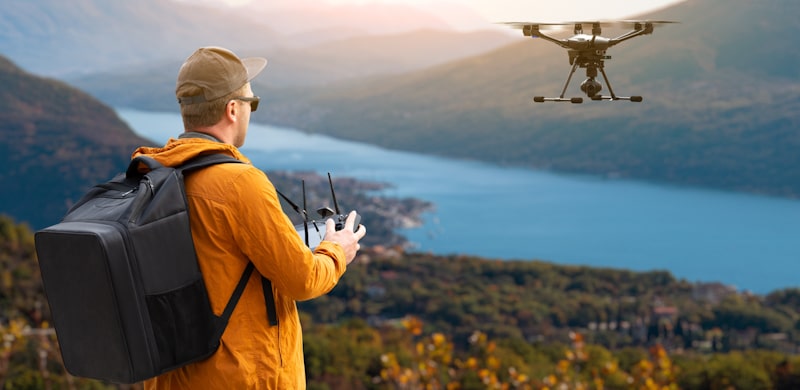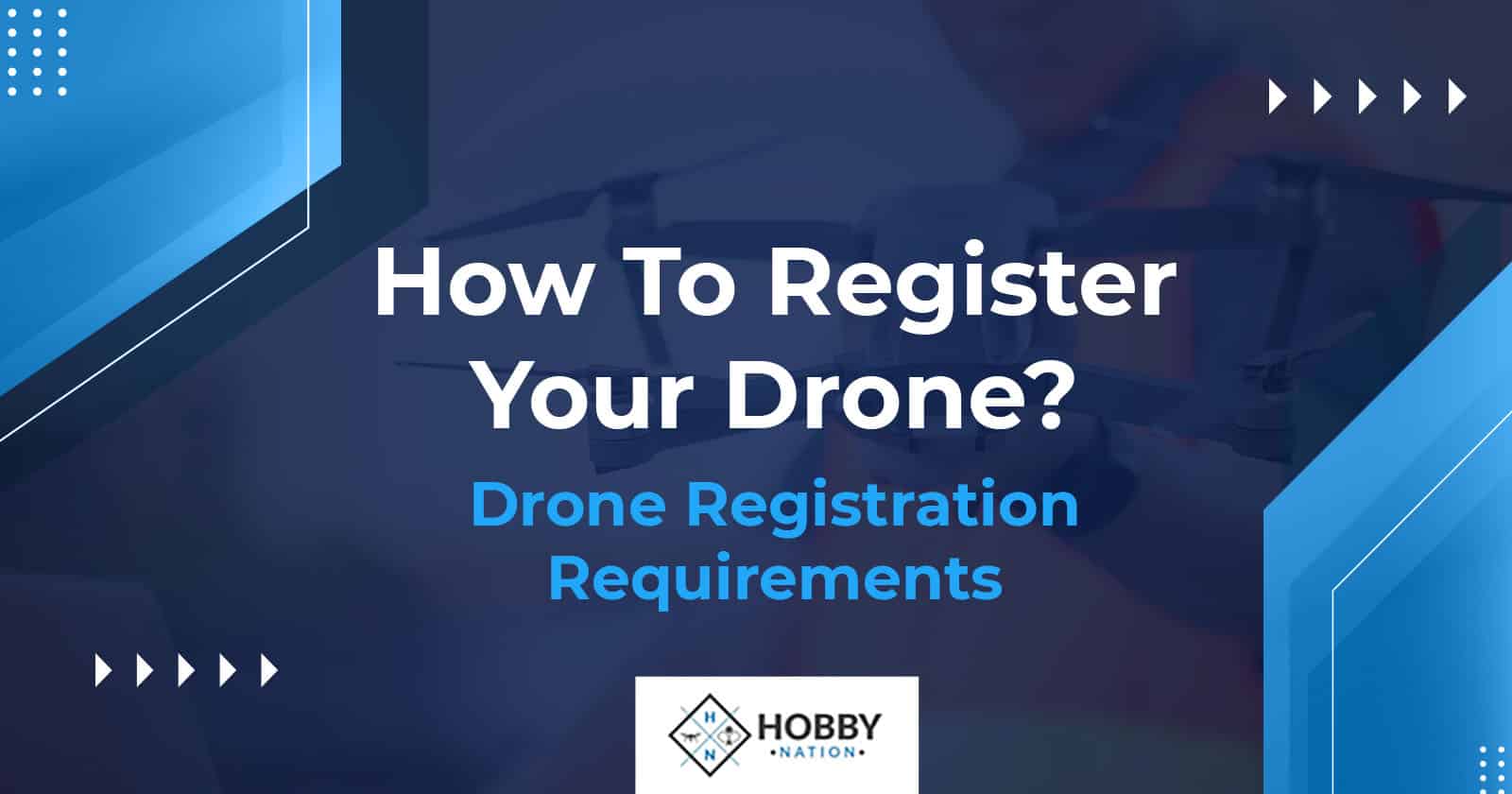Drones have become significantly popular lately; almost everyone owns a drone, while some fly their drones commercially (to make money), others fly for recreation. Every drone pilot should know the drone laws in their country of residence. Drone registration is a big deal in the United States of America.
To register your drone, you will have to visit the FAA website, create an account, fill in your details, proceed to checkout, pay the registration fee, and print out the registration number. Your drone must be heavier than 250 grams before it can be registered.
The first thing you should do before operating a drone is to learn the drone laws and regulations. As long as you comply with the drone laws, you will have no issue operating your drone.

Which Drones Need To Be Registered?
If you reside in the United States and are a drone lover, getting a drone will not be a problem for you as there are several places to get a drone in the U.S. However, one problem you might experience is the legal issue. In the United States, there is an agency in charge of drone operations and the rules and regulations guarding them, the FAA.
One of the requirements of drone operation in the United States is that you have t0 register your drone with the FAA. However, not all drones need to be registered with the FAA before being operated. A drone must meet certain requirements before it can be registered; knowing these requirements will help you stay out of trouble.
The Federal Aviation Administration requires drone registration for operators of Small UASs with a weight of more than 0.55 pounds or 250 grams. Commercial and public drones also need to be registered with the FAA; you must register your drone with the FAA if you plan to fly it as a hobby.
Drone operators must also have a compliance marking label with the drone registration number for identification and the Certificate of Registration, which can be carried on our Flight ID card. Your photo and information from your Certificate of Registration are also on the Flight ID card.
Some drones that need to be registered with the Federal Aviation Administration are DJI Phantom 3 Advanced, Parrot Bebop Drone, 3DR Solo Quadcopter, Yuneec Typhoon 4K, Hubsan X4 FPV, DJI Inspire Pro, DJI P2V+, Helimax Voltage 500, Parrot AR. Drone 2.0, and Yuneec Typhoon Q500+.
Do I Need A FAA License To Fly A Drones?
An FAA license is also referred to as an FAA-issued Pilot certificate; it is a certificate that verifies that a person is legally permitted to fly. The FAA issues a variety of airman credentials, including the FAA license. An FAA license is not necessarily needed for you to fly your drone; however, there are some cases where the license is required.
If you want to use your drone for employment or a company, you need a drone license. When you fly your drone for fun, that is, recreationally, you do not need an FAA license. Before getting an FAA license for your drone, you must have registered the drone with the FAA and completed compulsory training.
After getting your FAA license, there are some things you are required to do in order not to have your license revoked. One of the important things to adhere to is not flying your drone above moving vehicles or crowds. You should also fly your drone while maintaining a visual line of sight.
How Do I Register My Drone License?
One of the most severe drone laws you must not violate is flying an unregistered drone. The fine for operating an unregistered drone for civil cases can be up to $27,500 and about $250,000 for criminal cases; there is also a possibility of serving up to three years in prison.
Before you can successfully register for a drone license with the Federal Aviation Administration, you must meet the following standards;
- Be at least 16 years of age.
- Sit and pass the Aeronautical Knowledge Test.
- Be able to speak, write, read, and understand the English Language.
- Apply and obtain a Remote Pilot Certificate.
- Be physically and mentally healthy to safely operate a drone.

There are various topics your knowledge will be tested on when you take the knowledge test, including National Airspace System, Emergency Procedures, FAA Drone Laws, Sectional Chart, Aeronautical Decision-Making, Radio Communications, Airport Operations, Crew Resource Management, Micrometeorology, and Weather.
The first thing to do is obtain a tracking number from the Federal Aviation Administration before applying for the written test. Next, schedule an appointment at any FAA-approved Knowledge Testing Center to take the written knowledge test.
After taking and passing the written knowledge test, you must complete an FAA form for the remote pilot certificate. You will be issued a temporary drone pilot license within 10 business days of processing the permanent drone pilot certificate. You are required to take a recurrent written knowledge test every 24 months.
If you are a licensed manned aircraft pilot, you are not required to sit for the Part 107 exam. However, there is a free online course for manned aircraft pilots called the Part 107 sUAS (small Unmanned Aircraft Systems) on the Federal Aviation Administration website. Upon completing the free course, the pilot must also complete the FAA Form 8710-13 and validate his identity.
More like this: Getting Started With Drone Pilot License
How Much Does It Cost To Get An FAA Drone License?
Obtaining an FAA drone license costs $175; this is the cost for the Part 107 exam that you must pass to be issued an FAA drone license. The Federal Aviation Administration has issued over one hundred thousand drone licenses within a space of four years. Obtaining a drone license can only be conducted on the FAA website.
One of the best ways to prepare for the Part 107 exam is by registering in a drone pilot school to acquire knowledge of operating drones and how to pass the Part 107 exam. Different drone pilot schools have different fees, and the best thing is that you can fly your drone anywhere in the U.S., regardless of the drone pilot school you attend.
Federal Aviation Administration Rules For Flying Drones
The FAA has established laws that regulate the recreational and commercial operation of drones in the United States. As a drone pilot, you are required to know the laws; this is the only way you can comply with them and not have your drone seized for violation.
The FAA rules for recreational drone operation are:
- You must not fly your drone at night without adequate lighting.
- Your drone must be registered with the Federal Aviation Administration.
- You must not operate a drone under the influence of alcohol or drugs.
- Your drone must weigh less than 250 grams.
- You must always maintain a visual line of sight with your drone.
- Flying your drone over people, moving vehicles, near other aircraft, or emergency response is prohibited.
- The drone should be used for only recreational purposes and never for commercial purposes.
The FAA rules for commercial drone operation are:
- You can only fly your drone in the Class G airspace.
- Your drone flight speed must not exceed 100 mph.
- You must not fly your drone from a moving vehicle, except in a sparsely populated area.
- You need to have an FAA-issued Remote Pilot Certification before flying a drone for commercial purposes.
Final Thoughts
One of the drone laws you must never violate is operating a drone without registering it; this is a grave offense; it has the same consequence as flying a drone with an expired registration number. You should also obtain a drone license before operating a drone; this keeps your operation legal, especially as a commercial drone pilot.
More to learn: How To Make Money With A Drone: 6 Great Ways
Shawn Manaher loves to play with new toys and dive into new hobbies. As a serial entrepreneur, work definitely comes first but there is always room for hobbies.

